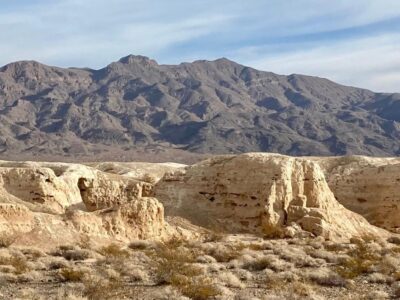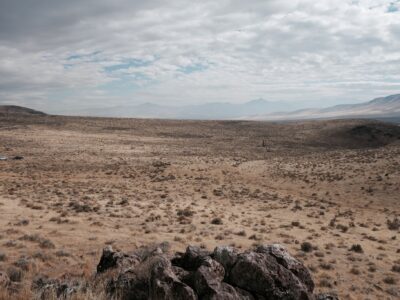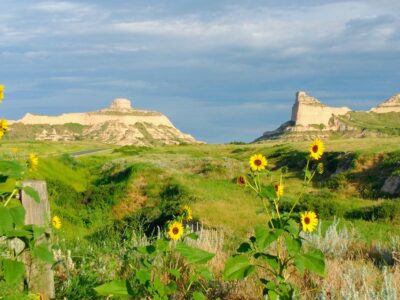The Pacific Northwest is one of North America’s most biodiverse regions, with various fish, mammals, and plants interacting with awe-inspiring rivers and mountains. Climate change and infrastructure have caused biodiversity to fluctuate in recent years. Several species of animals have suffered from diseases caused by invasive domesticated animals, pushing populations to critical levels.
Indigenous communities in eastern Washington state have made it their mission to restore native species populations. Near the Franklin D. Roosevelt Lake lies the Colville Confederated Tribes’ Hellgate game reserve. It is home to the state’s bighorn sheep population, which the Tribes have worked tirelessly to restore.
Bighorns were reintroduced to the game reserve in 2005, but the Tribes opened their wildlife conservation department in the 1970s. The area used to be a thriving salmon spawning area. Salmon would travel up the Columbia River, lay eggs, and die in the river.
The nutrients from the salmon carcasses would have a domino effect on the area. According to Yes! Magazine, the vegetation would grow lusher, feeding the herbivores like deer, elk, bighorns, pronghorns, and buffalo. The carnivores that prey on these animals — coyotes, wolves, lynxes, mountain lions, and eagles — would have more options to eat.
Photo Courtesy Brandon
However, salmon haven’t been able to travel up the river since 1942. The Grand Coulee Dam blocked 1,400 miles of spawning grounds. Less-nutrient forests and prairies drove the herbivores out. The Tribes also lost significant food sources when the dam was built, and the bighorn population was still dealing with diseases carried by European domesticated sheep. That problem traces back to the first American settlers in the Pacific Northwest.
The Tribes created their wildlife conservation department in 1975 with funding from the Bureau of Indian Affairs.
They have worked to restore bighorns, elk, sharp-tailed grouse, lynx, pronghorns, salmon, and buffalo to the Hellgate and Franklin D. Roosevelt Lake area. Wolves were permitted to recolonize the land in 2008, but this was by outside parties.
According to Yes! Magazine, only 136 bighorns were reintroduced first, with many still suffering from the domesticated sheep illnesses. Despite that, the Tribes managed to get the population up to 250 currently in the area. The Tribes also turned down big trophy hunting licenses on bighorns despite carrying a significant licensing fee in Oregon and Washington.
The Colville Confederated Tribes’ commitment to conversation runs deep. Last year, they established permanent protection of a part of the Okanogan River, considered a vital piece of Washinton’s wildlife corridors.
According to a news release, Western Rivers Conservancy (WRC) bought McLoughlin Falls Ranch in 2022 and held the land while working out who would protect it. In March, WRC conveyed the southern portion of the property to the Washington Department of Fish and Wildlife (WDFW) and the northern part to the Colville Tribes.
“We appreciate the partnership with WRC, WDFW, and Conservation Northwest in making this acquisition possible by working together in the name of conservation,” Jarred Erickson, Confederated Tribes of the Colville Reservation chairman, said in a statement. “McLoughlin Falls was a very important fishery to our people, and the cultural ties to these places are at the core of who we are as people.”
Tribal efforts to repopulate endangered species are critical to supporting biodiversity and natural relationships between animals and vegetation. These communities still rely on wild game for food and vegetation for traditional Indigenous medicine. The land is also ideal for farming, and the lack of salmon nutrients would affect the soil’s potency.
Photo Courtesy Chris Stenger
The bighorn restoration efforts of the Coleville Confederate Tribes contribute to the national resurgence of the species. The National Wildlife Federation says bighorns are no longer endangered, with approximately 80,000 in the North American wilderness. That is a massive increase over the few thousand that remained at the turn of the 20th century — the population was estimated between 150,000 and 200,000 before the 1800s.
The Federation also acknowledges bighorns are a source of food, clothes, and tools for many of the Tribes in Washington state. They are also native to the Sierra Nevada range in California and Nevada.
The conservation and restoration of species preserves the U.S.’s natural beauty. A more lush and biodiverse country leads to more nature tourism, stimulating the economy of several states with top national parks. It also secures a healthy environment for the generations to come.
Bighorns are truly a sight to behold. They can scale large cliff faces and survive in harrowing areas of mountains where even the bravest climbers wouldn’t venture. We need them for their stunning abilities and the altruistic properties they offer the land. ff





